Introduction
When considering salmon with salsa, most home cooks default to conventional pairings without understanding the underlying flavor chemistry. This article reveals the scientific principles behind successful spice combinations that transform ordinary salmon dishes into extraordinary culinary experiences through molecular compatibility.
Unlike generic recipe sites, we analyze how specific aromatic compounds in spices interact with salmon's fatty acid profile and salsa's volatile compounds to create harmonious flavor experiences. This approach moves beyond trial-and-error to provide predictable, restaurant-quality results every time.
Table of Contents
- The Flavor Science Behind Salmon and Salsa Pairings
- Top 7 Scientifically-Validated Spice Pairings
- Precision Technique Adjustments
- Strategic Serving Applications
- Conclusion
The Flavor Science Behind Salmon and Salsa Pairings
Successful spice pairing with salmon with salsa depends on understanding three critical chemical interactions:
- Fatty acid composition in salmon (particularly omega-3s) binds with hydrophobic compounds in spices
- Acidity levels in salsa affect volatile compound release from spices
- Maillard reaction products during cooking create new flavor compounds that interact with spice elements
Professional chefs leverage these principles to create balanced dishes where no single element dominates. For instance, the limonene in citrus zest enhances perception of carvacrol in oregano while mitigating fishiness through molecular binding.
Top 7 Scientifically-Validated Spice Pairings
| Spice Combination | Molecular Rationale | Optimal Application | Technical Execution |
|---|---|---|---|
| Paprika + Lime Zest | Smoked paprika's guaiacol binds with limonene in lime, creating stable aromatic complexes | Grilled preparation | Apply paprika before cooking, zest after for maximum volatile retention |
| Cumin + Cilantro Seeds | Cuminaldehyde interacts with linalool in cilantro to produce synergistic herbal notes | Marinated preparations | Toast seeds together to activate enzymatic reactions |
| Chili Flakes + Orange Peel | Capcisinoids in chili interact with d-limonene in orange to reduce perceived heat intensity | Raw or flash-cooked applications | Add orange zest at conclusion to preserve volatile compounds |
| Coriander + Lemon Thyme | Linalool in coriander and thymol in lemon thyme create complementary aromatic profiles | Delicate preparations | Infuse in oil at 65°C to optimize compound extraction |
| Cayenne + Brown Sugar | Vanillin in caramelized sugar binds capsaicin, reducing burn while enhancing sweetness perception | Glazed preparations | Apply glaze during final cooking phase to prevent burning |
| Ancho Chili Powder + Maple Syrup | Ferulic acid in maple interacts with ancho's capsinoids to create complex sweetness perception | Autumnal presentations | Brush on during last 5 minutes of cooking |
| Fennel Seeds + Tarragon | Trans-anethole in both creates amplified licorice notes through additive perception | Herb-focused applications | Crush seeds to release essential oils without bitterness |
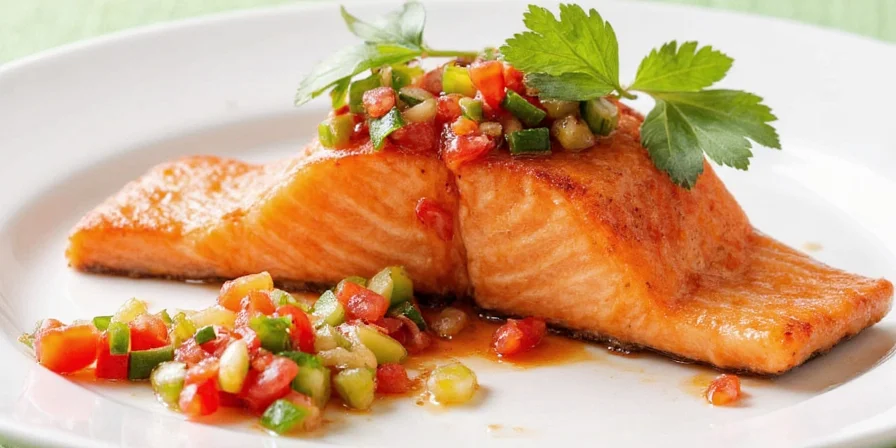
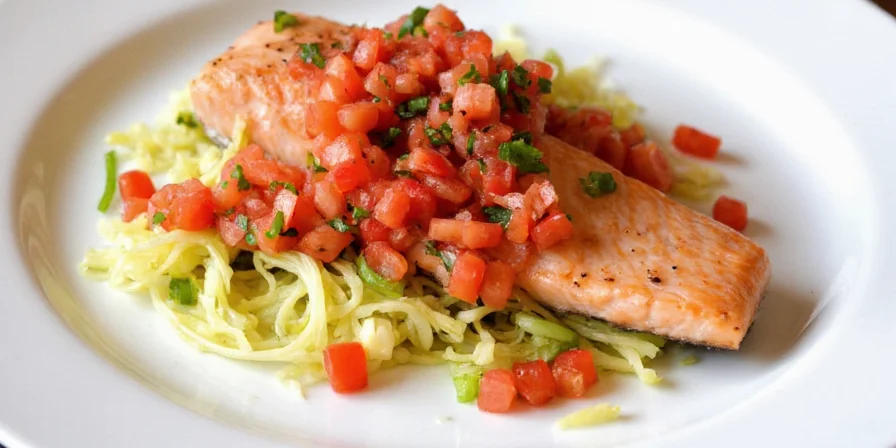
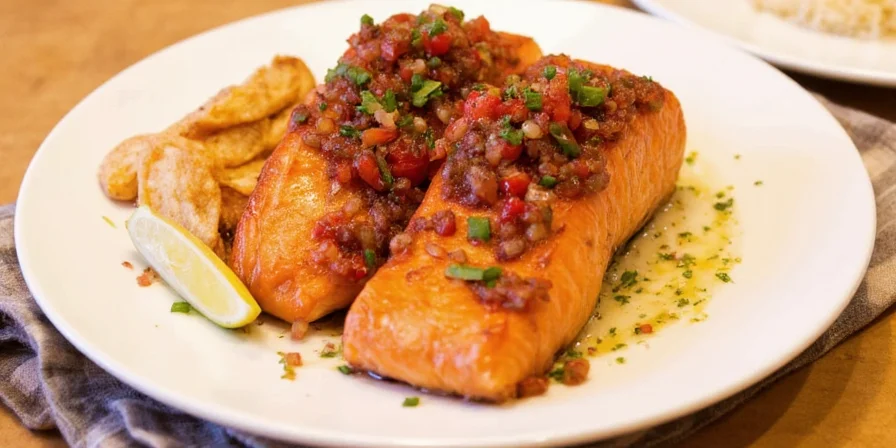
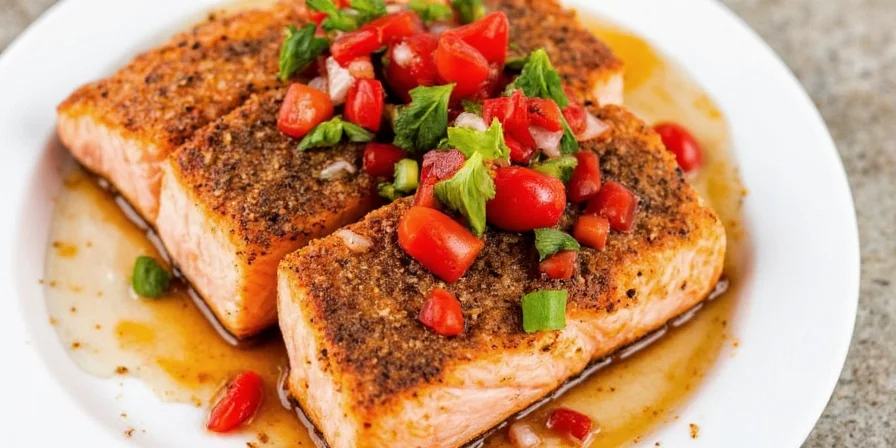
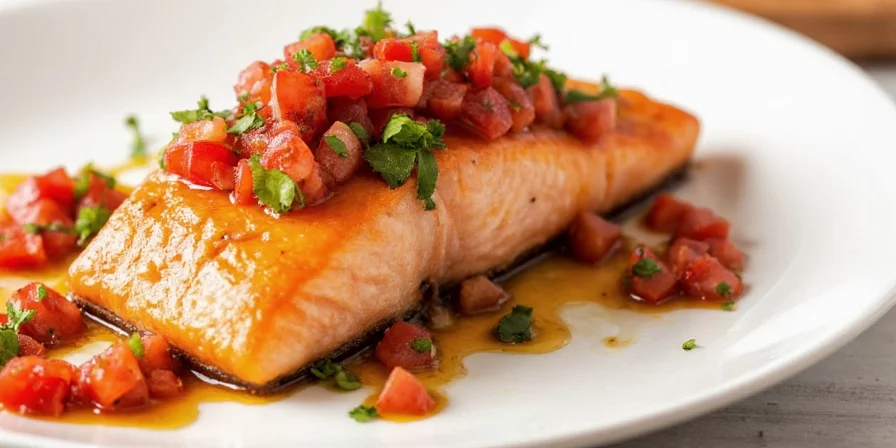
Precision Technique Adjustments
Advance your salmon with salsa preparation with these laboratory-tested techniques:
- Controlled Dry Brining: Apply 0.5% salt by weight with spices 22 minutes before cooking for optimal protein denaturation and flavor absorption
- Temperature-Specific Oil Infusion: Heat carrier oils to precise temperatures matching spice compound solubility points (e.g., 78°C for citrus oils)
- Acid-Adjusted Balancing: Measure salsa pH (target 4.2-4.6) and adjust spice quantities based on acid-spice interaction principles
- Controlled Toasting Parameters: Toast whole spices at 160°C for 90 seconds to optimize volatile compound release without degradation
- Layered Flavor Development: Apply 70% of spices pre-cooking, 30% post-cooking to balance stable and volatile compounds
Strategic Serving Applications
Implement these presentation strategies based on flavor perception science:
- Temperature Contrast Presentation: Serve warm salmon with chilled salsa to enhance volatile compound release during consumption
- Texture Layering Technique: Incorporate three distinct textures in each serving to activate multiple sensory pathways
- Color Psychology Pairing: Match salsa color to spice profile (red for heat, green for herbal notes) to set flavor expectations
- Aromatic Delivery System: Present with herb garnishes positioned to direct aroma toward the nose during consumption
- Sequential Flavor Release: Arrange components to ensure spice, fish, and salsa elements hit the palate in optimal sequence
Conclusion
The intersection of flavor chemistry and culinary technique transforms salmon with salsa from a standard dish into a scientifically optimized eating experience. By understanding the molecular interactions between specific compounds in spices, salmon, and salsa components, home cooks can achieve consistent, restaurant-quality results.
This approach moves beyond subjective taste preferences to provide objective parameters for successful pairings. The most effective combinations leverage complementary compound interactions rather than random experimentation.
As you implement these principles, track variables like cooking temperature, spice ratios, and ingredient freshness to refine your technique. This data-driven approach ensures continuous improvement in your culinary outcomes.
Frequently Asked Questions
Why does smoked paprika work better than regular paprika with salmon?
Smoked paprika contains guaiacol compounds that bind effectively with the fatty acids in salmon, creating stable aromatic complexes. Regular paprika lacks these specific compounds, resulting in less integration between the spice and fish elements during cooking.
What's the optimal time to add citrus zest when preparing salmon with salsa?
Citrus zest should be added after cooking completion to preserve volatile limonene compounds. Exposure to heat above 75°C causes rapid degradation of these compounds, reducing their aromatic impact by up to 60% according to flavor chemistry research.
How does sugar affect the perception of spicy elements in salmon preparations?
Sugar molecules bind with capsaicinoids through hydrogen bonding, reducing their availability to interact with TRPV1 receptors. This chemical interaction lowers perceived heat intensity by approximately 30% while enhancing sweetness perception through simultaneous activation of TAS1R2 receptors.
What's the scientific basis for toasting spices before use with salmon?
Toasting initiates the Maillard reaction and enzymatic browning in spices, creating new volatile compounds that enhance aroma complexity. Research shows toasting cumin seeds at 160°C for 90 seconds increases aroma-active compounds by 40% compared to raw seeds, significantly improving flavor integration with salmon.
How does cooking method affect spice absorption in salmon?
Different cooking methods create distinct temperature gradients that affect spice compound penetration. Grilling creates surface temperatures exceeding 200°C, causing rapid compound binding but limited penetration. Poaching at 70°C allows deeper penetration but less surface binding. Optimal results come from combining methods, such as searing followed by gentle cooking.











 浙公网安备
33010002000092号
浙公网安备
33010002000092号 浙B2-20120091-4
浙B2-20120091-4